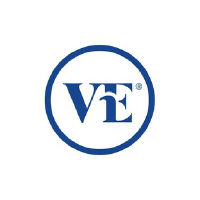
The Ultimate Directory on Finance Webinars
Search our directory for upcoming webinars on Finance
Previous Webinars

Structuring Preferred Equity Investments in Real Estate Ventures: Impact of True Equity vs. Debt-Like Equity
This CLE course will discuss structuring preferred equity investments (PEIs) from both the perspective of the sponsor or developer and investor and explain the advantages and disadvantages of using preferred equity as a component of a capital stack. The panel will review how PEIs compare and contrast with mezzanine financing and other equity investments, discuss the critical agreement terms and trends in the current market, and outline approaches for negotiating terms and provisions.PEIs, together with mortgage loans and mezzanine loans, are often a critical part of the capital structure used by sponsors to fund real estate ventures. The terms of PEIs can vary considerably. On one end of the spectrum PEIs are economically and functionally the equivalent of a mezzanine loan including being secured by a pledge of membership interest. On the other end of the spectrum are PEIs that are pari passu with the sponsor's equity. In any context, a PEI's equity is subordinate to all of the real estate venture's mortgage and mezzanine debts.PEIs typically seek a higher projected rate of return on the investment than debt financing. They may earn a share of cash flow and/or capital proceeds from a sale or refinancing above a stated rate of return and capital appreciation. The preferred equity investor generally has consent over "major decisions" (the list of which can range from a small handful of items to an extensive list), may have buy-sell rights, forced sale rights, or put rights, and typically have removal rights (the right to remove the managing member or general partner of the real estate venture and replace it with the PEI or its designee). Removal rights can run the gamut from being limited to bad acts or performance-based.To achieve all the benefits of PEIs and mitigate the risks, counsel to investors and the sponsor or developer entity must negotiate and structure key terms that address matters such as exit strategy, remedies in the event of such party’s default, issues surrounding a change in control, and the impact of an entity bankruptcy. Also, counsel should involve tax counsel to review and address tax implications for the entity and the investor and the sponsor or developer in the PEI agreement.Listen as our authoritative panel prepares counsel to real estate lenders, investors, and borrowers to structure, enforce, or challenge PEI agreements in the current real estate market. The panel will compare and contrast PEIs vs. mezzanine financing. The panel will also outline the key points of negotiation and agreement provisions for the equity investor and the real estate developer, including remedies for default, change in control, and exit strategy.OutlineI. Total return for the investorII. Preferred equity vs. mezzanine debtIII. Structuring the preferred equity dealIV. Remedies for defaultV. Change in control issuesBenefitsThe panel will review these and other key issues:• What are the primary benefits and risks of PEIs compared to other equity investments or mezzanine financing?• What are the key provisions that counsel to the investor, or the financing recipient must understand and negotiate when structuring the PEI agreement?• Letters of intent, cost-sharing agreements• How should preferred equity investor counsel address potential default, change in control, or bankruptcy by the financing recipient?• Importance of recognition by mortgage and/or mezzanine lenders with respect to cure and control rights• Guaranties: bad acts recourse completion, carry, environmental indemnitiesFaculty: Brooks S. Clark, Shareholder, Polsinelli; Mark S. Fawer, Partner, Greenspoon Marder; Thomas G. Maira, Partner, Chair of Real Estate Private Equity Group, Akerman.
by Strafford
4/15/2025 5:00 PM

Webinar: How AI is Powering the Rise of Cognitive Banking - Fintech Singapore
Join us for an insightful webinar on “The Rise of Cognitive Banking: How AI is Redefining Financial Services”, hosted by Fintech News Singapore.This webinar will explore how AI-powered cognitive banking goes beyond basic personalisation by anticipating and adapting to customers’ financial behaviors to enhance their financial wellness.The result? Stronger customer loyalty and increased adoption of financial products.The webinar will also feature key insights from the global survey “Understanding Consumer Demand in the AI-Banking Era.”We’ll reveal how, amid the growing demand for AI-driven, contextualised insights, more than half of customers in APAC would likely switch banks to access personalised financial wellness services.In this session, we will explore:• How AI-driven engagement can strengthen customer loyalty and reduce churn• How Cognitive Banking can empower people – from users making smarter financial decisions to employees delivering better banking experiences.• What it takes to build an AI-powered bank in 2025 and beyond.Panelists:• Dr. Geraldine Wong, Chief Data Officer, GXS Bank• Jino Noel, Chief Technology Officer, UnionDigital Bank• Jody Bhagat, President Global Banking, PersoneticsModerator:• Vincent Fong, Chief Editor, Fintech News Network
4/10/2025 7:00 AM

How to Settle Your Parents’ Estate: A Step-by-Step-Guide
Losing a parent can be one of life's most challenging experiences, especially with the overwhelming legal, tax, and administrative responsibilities that follow. This informative webinar aims to provide practical steps and support to help you effectively manage these responsibilities.Join Savant’s wealth transfer advisor, Alaina Davalos, and wealth transfer specialist, Darlene Beckles, as they discuss important topics to help you navigate this difficult time.We’ll cover: • Immediate steps after the loss• Understanding probate and the estate settlement process• Account transfers and property appraisals and management• Required accountings and communication with family members• Long-term and proactive planning as you move forwardWhile all are welcome to attend our webinars, this event is designed for individuals who have saved at least $500,000 for retirement. Our presenters typically speak with that in mind.
4/2/2025 6:00 PM

Recovery Strategies: Turning Tax Reclaims & Class Action into Revenue
You are invited to join Enfusion, in collaboration with WTax and Financial Recovery Technologies (FRT), for an insightful webinar on maximizing fund value through withholding tax reclaims and securities class action recovery.Are you leaving valuable opportunities on the table? Many investors unknowingly miss out on recoveries leaving significant value unclaimed. In an environment where fund managers are under growing pressure to reduce fees and deliver greater return, recoveries are underutilized to supplement alpha, offset costs, and meet fiduciary duties with no extra resources needed. This webinar will provide practical insights into how APAC fund managers can leverage recovery strategies to improve profitability.Webinar Highlights:• Market Trends: Explore the impact of fee compression and innovative ways to boost returns beyond traditional alpha.• The Power of Recovery: Understand the critical role of recovery in withholding tax reclaims and securities class actions to enhance fund performance by unlocking hidden value.• Actionable Insights: Learn from the proven success in recovery strategies and how APAC fund managers can utilize to supplement alpha.About WTaxWTax manages and maximizes foreign withholding tax relief and reclaim entitlements for investors and financial institutions. They consistently increase investment performance by up to 52 basis points per annum for over 900 clients globally, through optimising market coverage, shortening refund timelines, and improving cash flow.Their scalable and transparent tax solutions, coupled with in-depth technical expertise, reduce the administrative burden for their clients, saving time and allowing them to focus on their core investment activities.About FRTFinancial Recovery Technologies (FRT) is a leading global securities class action recovery service provider. They provide services to 2,500+ institutional clients, representing $45+ trillion in total AUM.They help institutional investors identify eligibility, file claims and collect funds made available in securities and other class action settlements. FRT offers comprehensive litigation monitoring and claims recovery services empowering clients with greater transparency, information, and insight.Featured Speakers: Christy Lai, Executive Director, Regional Lead - APAC, Enfusion; Bryan Gray, Regional Director - APAC, WTax; Mike Lange, Esq., Senior Vice President of Worldwide Litigation, Financial Recovery Technologies.
3/27/2025 2:00 AM

Australian hybrids: Navigating the next phase
How investors can navigate the changing hybrid market and stay ahead of the curve.A major structural shift is coming to Australian banks. ASX bank hybrids, also known as Additional Tier 1 (AT1) capital, will begin phasing out from January 2027, bringing significant implications for investors in this $42 billion market.Join VanEck’s investments experts live as they unpack the impact of this transition, provide in-depth analysis of the fixed income and capital securities landscape, and discuss portfolio positioning.Attendees who are financial professionals will receive CPD credit within two weeks following the live webinar.Speakers:Cameron McCormack, Senior Portfolio Manager, VanEck.Cameron is an experienced actuary with expertise in quantitative modeling, investment performance evaluation, and trade execution. Previously, Cameron worked in pricing and client solutions at Pacific Life Re Australia. He is an Associate of the Society of Actuaries (ASA).Pranay Lal, Senior Associate, Investment & Capital Markets, VanEck.Pranay specialises in equity and fixed-income trading execution, creating quantitative models for portfolio management, and delivering investment analytics. Previously, Pranay held roles at Macquarie Group and PwC Australia. He is an Associate of the Institute of Actuaries Australia (AIAA) and a Chartered Enterprise Risk Actuary (CERA).
3/26/2025 3:00 AM

Turn prospects into investors: The power of streamlined onboarding to drive conversions
Turn prospects into investorsThe power of streamlined onboarding to drive conversionsSimplify onboarding, reduce errors, and close deals faster. Join us to see how Agora’s Smart Questionnaire streamlines investor commitments and accelerates capital raising.What’s on the agenda?1. Turn prospects into committed investorsLearn how to eliminate friction in the onboarding process with an intuitive, guided experience that helps investors move from interest to commitment seamlessly.2. Accelerate capital raisingClose deals faster by eliminating complicated onboarding processes and bottlenecks that slow down the subscription process.3. Speed up investor commitmentsLeverage pre-filled data, dynamic workflows, and streamlined e-signature capabilities to make the subscription process effortless for LPs while minimizing errors and revision needs.4. Simplify collaboration across stakeholdersEnable RIAs, Broker Dealers, and Family Offices to work together seamlessly with bespoke workflows designed for complex investor structures.5. See the Smart Questionnaire in actionWatch a live demo and explore real-world use cases showcasing how leading firms are using Smart Questionnaire to onboard investors faster and raise capital more efficiently.Hosted by: Julia Benichou, Product Marketing Manager at Agora; Miles Hector, Solutions Engineer at Agora.
by Agora
3/25/2025 5:00 PM

Free Webinar | Identity Theft, Fraud, and Scams
There are unfortunately a lot of creative people out there who will go to extreme measures to take advantage of honest people’s personal information and hard-earned money. While it is unfortunately impossible to guarantee 100% protection, we want to help you take steps to reduce your chances of ending up in this situation.Join us for a workshop to learn about identity theft, fraud, and scams. We’ll talk about what to be on guard against, how to protect yourself, and steps to take if – despite your best efforts – you experience this.What You Will LearnWhat identity theft, fraud, and scams areCommonly used elder fraud tacticsWays to protect yourselfWho Should AttendAnyone who uses the internetAnyone who uses debit cards, credit cards, and checking accountsThose who want to keep their personal information from landing in the wrong handsPresenter: Shamica Joseph - Learning Experience Designer, GreenPath.
12/11/2024 7:00 PM

Working with Today's Investors
As Canadian financial advisors have experienced, we face a rapidly evolving investor landscape. Understanding the shifting investor behaviour is crucial to providing value and strengthening relationships. Join us for an exclusive webinar with Morningstar Canada to explore trends and insights from comprehensive industry surveys on Canadian retail investors. You'll discover practical strategies for addressing the DIY investing options and showing your value of advice, overcoming investor biases, meeting evolving regulations, and enhancing client education on risk.By attending the webinar, advisors will be equipped to help their clients understand:• What are the suitable investment options for me?• How does my portfolio align with my comfort around risk?• How can you give me confidence that I'm receiving good advice?Take advantage of this opportunity to refine your approach and stay ahead of the curve. Register today to gain valuable insights and elevate your advisory practice by utilizing data to deliver personalized recommendations based on client-specific risk profiles and goals.Speakers: Ian Tam, Director of Investment Research, Morningstar Canada; Jenny MacMillan Brown, Vice President, Business Development, Morningstar Canada.
11/21/2024 6:00 PM

Unlocking Better Client Outcomes with Digital Empowerment and Financial Psychology
While it’s understood that technology is a crucial element in financial planning, it’s a common misconception that applying technology is a one-and-done process. True digital empowerment requires a structured, ongoing approach to maximize the value of technology as firms evolve. Similarly, financial psychology has become an essential part of modern planning. However, many firms are still searching for ways to effectively weave it into the planning process, despite its proven effect on client outcomes.Join our upcoming webinar with Fidelity, where we will delve into the intersection of digital empowerment and financial psychology. We will explore what we can learn from firms that embrace technology and financial psychology practices, and how these firms experience superior outcomes.Speakers: Margaret Wilson, Vice President, Technology & Platform Consulting, Fidelity Investments; Emily Koochel, PhD, AFC®, CFT-I™, BFA™, Manager, Financial Wellness, eMoney Advisor.
11/18/2024 7:00 PM

Strengthening Collections in the Cost-of-Living Crisis: Tools and Tactics for European Lenders
The ongoing cost-of-living crisis in Europe is driving up lender operational costs, consumer debt, and defaults.Join Qualco and Arum for this Arum Approved System Series webinar, where we’ll cover:• How the crisis is reshaping collections across Europe• Ways automation and data can help tackle rising delinquencies• AI’s role in enhancing customer connections and decision-making• Strategies for building resilience and efficiency• New approaches to elevate your collections strategySpeakers: Tim Graham - Senior Solution Design Consultant, Qualco; Nikos Kanellopoulos - Solution Design Analyst, Qualco; Forid Meah - Head of Advisory Services, Arum.
by QUALCO
11/14/2024 11:00 AM